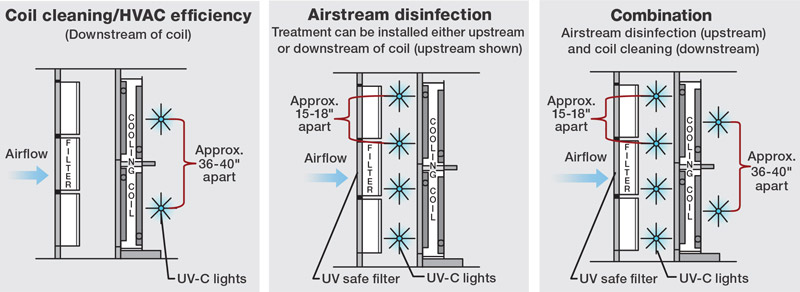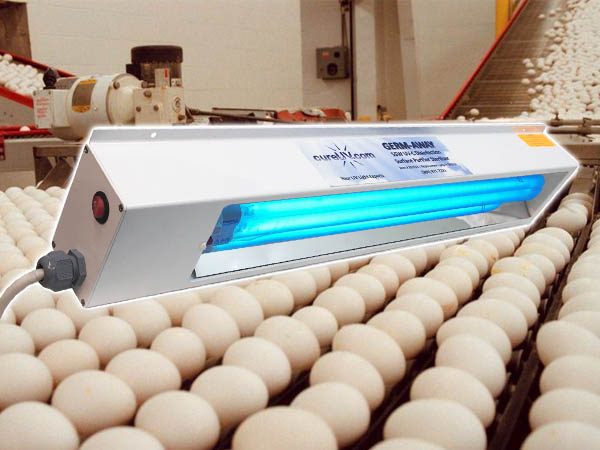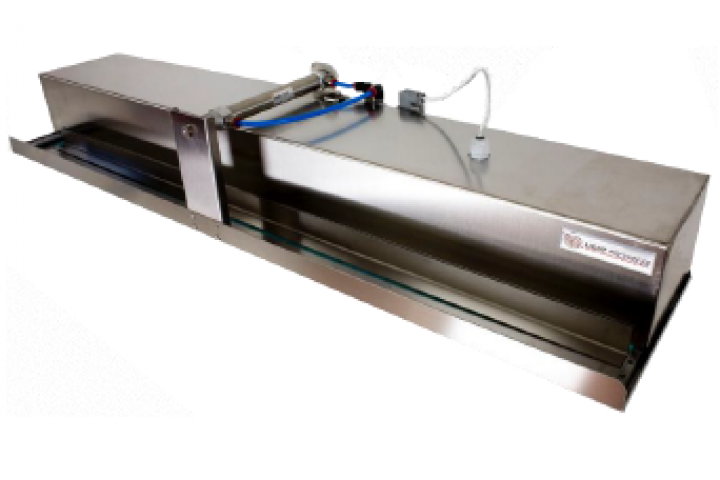UV Surface Disinfection Made Simple: Implementing Ideal Practices for Ideal Results
UV Surface Disinfection Made Simple: Implementing Ideal Practices for Ideal Results
Blog Article
Harnessing the Prospective of UV Sanitation: Shielding Wellness and Hygiene
As the globe grapples with the recurring pandemic and the consistent threat of transmittable illness, the relevance of preserving wellness and health has actually never been much more apparent. In this context, harnessing the possibility of UV disinfection becomes a promising option. UV sanitation, an innovation widely made use of in different markets, has actually confirmed effective in removing harmful microorganisms. There is much even more to explore behind the scientific research of UV disinfection and its applications. From recognizing the systems at play to applying this innovation in our every day lives, this discussion aims to shed light on the possibility of UV disinfection and its duty in safeguarding our health and hygiene.
Understanding UV Sanitation
UV disinfection is an extremely effective and extensively made use of approach for removing unsafe virus and ensuring health and wellness and hygiene. This technique utilizes ultraviolet (UV) light to inactivate microorganisms by harming their DNA and stopping them from recreating. UV sanitation is particularly effective versus bacteria, infections, and various other bacteria that can cause infections and illness.
The concept behind UV sanitation is basic yet powerful. When UV light is released at a details wavelength, it penetrates the microorganism's cell wall surface and disrupts its genetic product. This procedure, called photodissociation, leads to the development of thymine dimers, which protect against the microorganism from reproducing and making it harmless. UV sanitation can be used in various settings, including water therapy plants, medical care facilities, food processing markets, and air purification systems.
Among the advantages of UV sanitation is its capacity to efficiently and efficiently get rid of a large range of virus without the requirement for chemicals or additives. Unlike other disinfection methods, such as chlorine or ozone, UV disinfection does not present dangerous by-products or chemical residues into the atmosphere. In addition, UV sanitation is a non-contact procedure, which implies that it does not call for physical contact with the microorganisms, minimizing the risk of cross-contamination.

The Scientific Research Behind UV Sanitation
The efficiency of UV disinfection lies in its capacity to disrupt the genetic material of microbes, providing them not able to duplicate and thereby eliminating their damaging capacity. This high-energy UV-C radiation is most efficient in sanitation applications due to the fact that it can permeate the cell wall surfaces of microbes and damage their DNA or RNA.
When microorganisms are revealed to UV-C radiation, the power is absorbed by their genetic product, triggering bonds to break and developing chain reactions that interrupt their capability to duplicate. This stops the bacteria from duplicating and spreading infection. UV sanitation is particularly effective versus infections, bacteria, and fungis, consisting of common virus such as Escherichia coli, Salmonella, and Influenza.
The scientific research behind UV sanitation is sustained by considerable research and studies. It has been shown that exposure to an enough dose of UV-C radiation can accomplish a high degree of disinfection, usually exceeding 99.9% efficacy in killing microorganisms. Nonetheless, it is essential to note that the efficiency of UV sanitation relies on numerous aspects, consisting of the intensity of UV-C radiation, direct exposure time, range from the UV resource, and the susceptibility of the bacterium to UV radiation.
Applications of UV Disinfection
Provided the considerable research and efficiency of UV sanitation in interfering with the genetic product of bacteria, it is essential to explore the various functional applications of this modern technology. UV sanitation has actually shown to be an important device in a vast range of sectors where preserving a clean and safe environment is important.
One major application of UV disinfection is in health care settings. UV light can be used to disinfect surfaces, equipment, and also the air in health centers and clinical facilities. This aids to minimize the danger of healthcare-associated infections and ensures a much safer atmosphere for patients and medical care workers.
An additional vital application is in the food and drink industry. UV sanitation is used to treat water and get rid of harmful pathogens, such as E. coli and Salmonella, from the production procedure. uv surface disinfection. This guarantees the safety and quality of the items we consume
UV disinfection is likewise widely utilized in water treatment plants and wastewater therapy centers. It is an effective method for ruining unsafe bacteria, infections, and bloodsuckers that can be present in water sources. This assists to give secure and tidy drinking water to communities and safeguard the setting from pollution.
Furthermore, UV disinfection is utilized in the pharmaceutical market to disinfect tools and keep the stability of items. It is additionally made use of in research laboratories and research facilities to prevent contamination and guarantee precise results.
Advantages of UV Disinfection Modern Technology
One notable benefit of using UV disinfection innovation is its ability to effectively eradicate bacteria without using rough chemicals. This is especially beneficial in different setups, such as healthcare centers, water treatment plants, and food processing industries, where the existence of damaging virus postures a significant threat to public wellness and security.
Unlike typical sanitation techniques that depend on chemicals like chlorine address or ozone, UV sanitation modern technology utilizes ultraviolet light to target and destroy the DNA of bacteria, successfully counteracting their ability to duplicate and trigger infections. This procedure not just removes the need for potentially dangerous chemicals but additionally lowers the threat of chemical deposit or by-products remaining in the treated environment.

Moreover, UV disinfection innovation is eco friendly. As it does not rely upon using chemicals, it removes the requirement for their disposal, manufacturing, and transport, lowering the total carbon footprint connected with disinfection procedures. Additionally, UV sanitation systems have a longer life-span compared to chemical-based approaches, leading to much less regular substitute and further reducing waste.
Applying UV Disinfection in Every Day Life
To successfully apply UV disinfection in daily life, organizations and people can integrate mobile UV sterilizing gadgets right into their hygiene regimens and cleaning up practices. These tools are designed to release ultraviolet light, which has been confirmed to kill or inactivate a vast array of microbes, including infections, fungis, and germs. By making use of portable UV disinfecting gadgets, individuals can sanitize typically touched things and surface areas, such as mobile phone, tricks, laptops, and doorknobs, decreasing the danger of spreading out bacteria and infections.
In addition to incorporating mobile UV disinfecting tools, it is vital to adhere to proper standards and suggestions for effective UV sanitation. This includes ensuring that the device is made use of properly and for the advised period to accomplish optimum disinfection results. view publisher site It is also crucial to focus on precaution, such as wearing protective glasses and avoiding direct exposure of the UV light to the skin.

Moreover, companies can implement UV sanitation technology in various settings to improve hygiene techniques. Health centers and health care centers can use UV disinfection robotics to disinfect person rooms, running theaters, and other high-touch locations. Food processing markets can integrate UV sanitation systems right into their production lines to improve food security and protect against contamination.
Conclusion
In final thought, UV disinfection innovation holds excellent prospective in securing health and wellness and health. With its many benefits, UV disinfection is a useful tool for maintaining a clean and healthy and balanced setting.
Unlike other disinfection techniques, such as chlorine or ozone, UV disinfection does not introduce damaging byproducts or chemical deposits into the environment. It is important to note that the effectiveness of UV sanitation depends on various factors, consisting of the strength of UV-C radiation, visit here exposure time, range from the UV source, and the vulnerability of the bacterium to UV radiation.
One more advantage of UV sanitation innovation is its capacity to offer continual and rapid disinfection. Unlike guidebook cleansing methods, which can be lengthy and require significant labor, UV sanitation systems can be automated and operate constantly, ensuring constant sanitation without human intervention.To properly apply UV disinfection in everyday life, people and companies can incorporate mobile UV sterilizing devices right into their hygiene regimens and cleaning methods.
Report this page